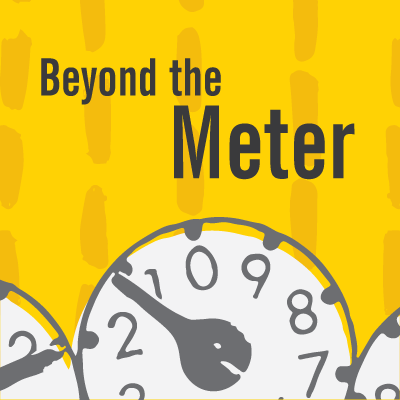Resiliency In Healthcare with Eric Bennett
Hurricane Katrina and Superstorm Sandy were each crisis situations in their own right and one of the sectors impacted that brought the issue of power resilience to the forefront was healthcare. It’s easy to see how life and death are on the line when power outages or disruptions impact a care facility. Join host John Failla as he speaks with Eric Bennett of Duke Energy and Matt Stiene of Novant Healthcare as they discuss the current state of resiliency in healthcare systems, the challenges faced in becoming more resilient, and what the future may hold.
You will want to hear this episode if you are interested in…
- The role and responsibilities of today’s guests [1:12]
- Resiliency is an important consideration for the healthcare sector [3:05]
- How does compliance impact the application of resilient measures? [7:27]
- The unique challenges to adopting new technologies in light of regulations [10:16]
- Utilizing partnerships to move redundant systems and projects forward [19:11]
- Energy management budgets and the challenges organizations face [21:47]
- Guidelines Novant uses to consider financing renewable energy structures [28:35]
- The greatest challenges in resiliency management going forward [31:33]
- What’s next for Novant and the healthcare industry in terms of energy? [36:45]
Healthcare resilience can easily be an issue of life and death
Life support and medical systems of all kinds that are typical to health systems require power to operate. Those in charge of running healthcare facilities and those responsible for their construction have to think through how to provide that power in an uninterrupted fashion so that patient care is not compromised.
Matt Stiene shares how Novant Healthcare is committed to multiple sources of power for its facilities, with secondary systems many times taking the form of backup generators that can power entire facilities for long periods if needed. But even so, the desire to move toward sustainable sources of energy is becoming a greater consideration. Listen to hear how Novant is addressing these challenges and how the healthcare sector is doing at addressing the energy challenges it faces.
The application of microgrids promises great potential for healthcare
The latest statistics reveal that the healthcare industry is the 5th largest greenhouse gas emitter in the world. With the amount of power required for the average healthcare facility, that shouldn’t be a surprising figure. But given that healthcare should be focused on overall health, including how health is impacted by the environment, those figures are dominant on the radar of many senior leaders in the healthcare sector.
Microgrid solutions, built on-sight as power backups are one option being pursued. Two of Novant’s facilities only have one primary service available either in terms of the source the power comes from or in the means of delivery the provider employs. An on-sight battery storage facility is one microgrid option the organization is pursuing in those situations. Matt admits that due to the limitations of how battery systems work, it’s not a long-term fix but could allow for uninterrupted operations for a significant time while getting the facility’s primary power systems back online.
How do renewables fit into the resiliency picture?
Healthcare organizations are taking a closer look at renewable energy these days. That’s because leaders in the industry see it as their responsibility to contribute to the overall health of those in their communities, not just to the acute or responsive care that’s typically provided in a healthcare facility. For Novant, the mission of “Improving the health of our communities one person at a time” is taken very seriously and sustainability figures into that. He says that the internal pressure to move toward sustainable sources of energy is growing and also says that the communities they serve are expressing growing concern about the issue as well.
But the metrics around costs make it challenging. Novant shoots for energy projects that they can pay back within two years and many others in the sector consider a three to five-year payback of capital acceptable. But when power from the regular power grid can be bought for less, it can be a hard sell to the finance department. Listen to hear how Novant and other organizations are addressing these issues with the help of their energy partners, like Duke.
Connect with Our Guests
Eric Bennett, Duke Energy, Key Segment Manager Health Care
With over 15 years of experience in the energy industry, Eric leads Duke Energy One’s Health Care segment. He works with customers and stakeholders across the Health Care segment to identify emerging trends, technological developments, and market Solutions.
- Follow Eric on LinkedIn
Matthew Stiene, VP Construction and Engineering, Novant Health
Matt has a 20-year history of solid accomplishments and excels developing high-performing teams, creating metrics to track performance for continuous improvement, developing and implementing infrastructure capital renewal plans, developing facility and land use master plans, and developing and implementing energy reduction strategies. Active in his profession and the community, Matt is a past-president of the International Facility Management Association, Charlotte chapter, a member of the American Society of Healthcare Engineers, the North Carolina Healthcare Engineers Association and a professional member of the Society of Fire Protection Engineers. He serves on the board of directors of the Hospitality House of Charlotte, the Town of Harrisburg Fire Advisory Board, as well as a youth baseball coach.
- Follow Matt on LinkedIn
Connect With Smart Energy Decisions
- Follow them on Facebook
- Follow them on Twitter
- Follow them on LinkedIn
Subscribe to Beyond The Meter on
Apple Podcasts, Google Podcasts, Spotify






